Did you know that there are many differences between the Australian Shepherd vs Australian Cattle Dog? Both the Australian Shepherd and the Australian Cattle Dog are herding dog breeds- but what else do they have in common, and what differences exist between them?
History
Despite their similarity in names, these two breeds actually have very distinct backstories. The Australian Cattle Dog’s origins are, indeed, in Australia. These pups were cross-bred Down Under in response to the explosion of cattle ranching in the country during the early 19th century. They were highly valued work dogs for their intelligence, energy, and stamina.
The Australian Shepherd’s name is a bit misleading. This popular pup breed was actually developed in the western United States. The international growth of the sheep ranching industry during the late 19th century led to the development of this breed, which was influenced by both Spanish and British dog breeds. Australian Shepherds were prized by sheep ranchers for their work ethic, loyalty, and enthusiasm.
You’ve probably noticed that the Australian Shepherd and the Australian Cattle Dog have different coat types and colors. But we can also help you tell them apart through their size, weight, trainability, or life expectancy.
Let’s now take a closer look at how exactly you can identify these two breeds, with the help of some key differences that will come in handy both as a dog enthusiast and owner.
Comparing Australian Shepherd vs Australian Cattle Dog

| Key Differences | Australian Shepherd | Australian Cattle Dog |
|---|---|---|
| Size | 18-23 inches tall | 17-20 inches tall |
| Weight | 35-70 pounds | 40-55 pounds |
| Colors | Brown, red, black, grey, tan | Blue, grey, red, blue speckled, blue mottled |
| Coat | Double coat; long, wavy, thick | Double coat; short |
| Temperament | Very loyal and friendly, intelligent and protective, playful and active | Independent, extremely intelligent, loyal, active, affectionate |
| Trainability | Easily trained if starting from an early age; requires constant training and exercise | Very trainable; requires a training routine and rewarding techniques |
| Life Expectancy | 13-15 years | 13-15 years |
| Energy Levels | Very high energy level | High energy level |
Key Differences Between Australian Shepherd vs Australian Cattle Dog
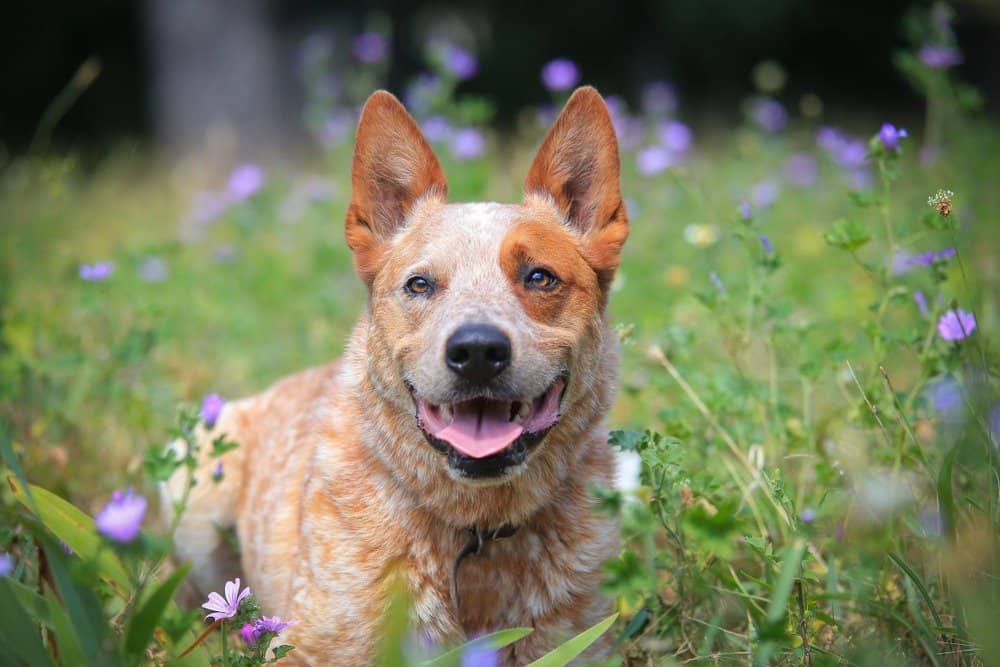
The Australian Shepherd is more eager to please its owner, while the Australian Cattle Dog is more independent.
©Melounix/Shutterstock.com
There are many key differences between the Australian Shepherd and the Australian Cattle Dog including their different sizes and weights, coat types, and colors. They also have slightly different temperaments, energy levels, and training preferences. The Australian Shepherd is taller and heavier than the Australian Cattle Dog, while the latter has a more specific coat color and a longer life expectancy.
Both are herding dog breeds, so their temperament and trainability are similar. However, we can still highlight some differences between the two. For instance, the Australian Shepherd is more eager to please its owner, while the Australian Cattle Dog is more independent and often takes the lead during training.
If you’re willing to learn more about the key differences between the two breeds, we’re happy to provide you with detailed insights below.
Common Health Issues
Both the Australian Shepherd and the Australian Cattle Dog are generally healthy breeds, but like all dogs, they can be prone to certain health issues. It’s important to be aware of the common health concerns for each breed to ensure that you can provide the best care for your pet.
The Australian Shepherd is known to be prone to certain genetic health issues such as hip dysplasia, eye problems, and deafness. They can also be prone to skin allergies and flea allergies, which can cause itching and skin irritation. Regular veterinary check-ups and a healthy diet can help prevent and manage these health issues.
The Australian Cattle Dog is also prone to certain health issues, including hip dysplasia, eye problems, and deafness. They can also be prone to certain skin problems, including mange and hot spots. Regular exercise and a balanced diet can help keep the Australian Cattle Dog healthy and happy.
It’s important to be aware of the common health issues for both the Australian Shepherd and the Australian Cattle Dog to ensure that you can provide the best care for your pet. Regular veterinary check-ups and a healthy lifestyle can help prevent and manage these health issues and ensure that your pet stays happy and healthy for many years to come.
Australian Shepherd vs Australian Cattle Dog: Size and Height
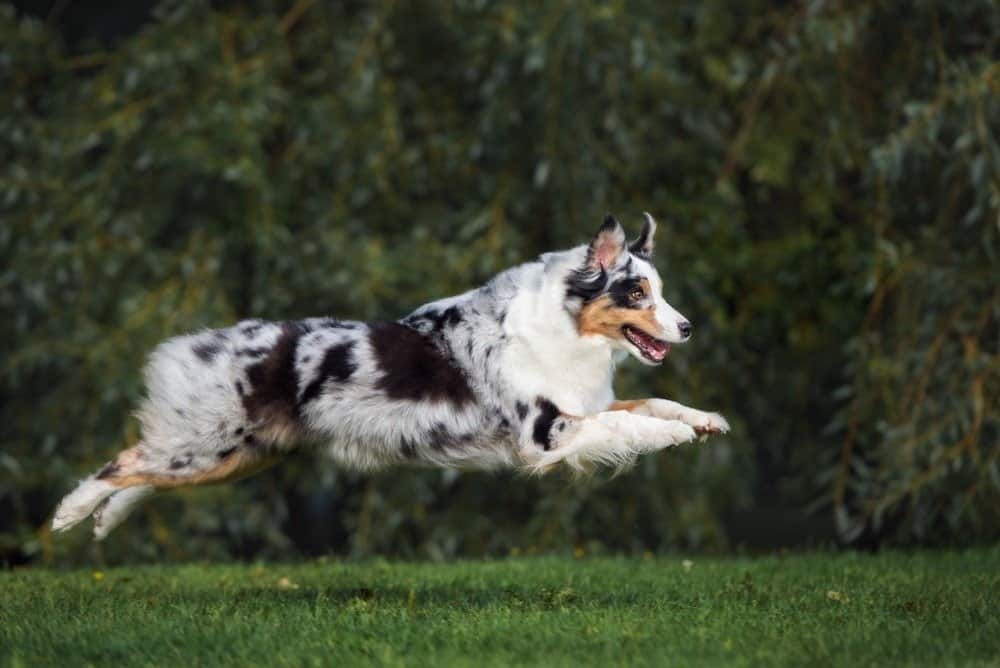
The Australian Shepherd is slightly bigger (18-23 inches) than the Australian Cattle Dog (17-20 inches).
©otsphoto/Shutterstock.com
Both breeds have similar sizes. The Australian Shepherd is slightly bigger (18-23 inches) than the Australian Cattle Dog (17-20 inches). In terms of weight, the Australian Shepherd can have up to 25-30 pounds more than the Australian Cattle Dog.
Australian Shepherd vs Australian Cattle Dog: Coat Type and Color
The Australian Shepherd’s coat is long, wavy, and thick, which means that it requires a lot of grooming, especially during the shedding session. This might be an important factor to consider if you’re thinking about buying a dog. What is special about the coat of the Australian Shepherd is that every dog has a unique variation of color. The standard includes blue merle and red merle, solid black or red.
The Australian Cattle Dog has a short-haired coat, making grooming easier and rarer. The curious thing about an Australian Cattle Dog is that it can be either a Blue Heeler or a Red Heeler. The Blue Heeler is a variation that has black hairs spread among the white hairs and, in turn, can be blue-speckled or blue-mottled. These combinations make the dog’s coat look like it has a blue color. The Red Heeler is a variation that has brown hairs among the white hairs, which gives the coat a reddish appearance.
Australian Shepherd vs Australian Cattle Dog: Temperament

The Australian Shepherd is considered intelligent, loyal, active, and energetic and the Australian cattle dog is more aloof.
©Alpeek/Shutterstock.com
Both the Australian Shepherd and the Australian Cattle Dog are considered intelligent, loyal, active, and energetic dog breeds. They are both very affectionate and playful. Because they are a bit cautious around strangers or new situations, their owners should invest time in early socialization, helping them get used to new people and various places and sounds. The fact that they are cautious makes them a perfect fit for being guard dogs.
These two dog breeds will get extremely attached to their owners and will defend them anytime, sometimes without even waiting for a command.
Australian Shepherd vs Australian Cattle Dog: Independence
The Australian Cattle Dog is much more independent than the Australian Shepherd, making this one of the key differences between the two breeds. If the owner doesn’t have much experience with dogs, it can take the lead in the household. This makes them a better choice for families that aren’t always at home because the Australian Cattle Dog doesn’t mind being left alone. They would still rather be around people, however.
The Australian Shepherd is keener on pleasing the owner and is less likely to take the lead, even though it is also known as an independent breed. It is also a very patient breed, making difficult situations bearable for the owner. Unlike the Australian Cattle Dog, the Australian Shepherd does not like being left alone. They can become anxious and develop destructive behavior.
Australian Shepherd vs Australian Cattle Dog: Trainability
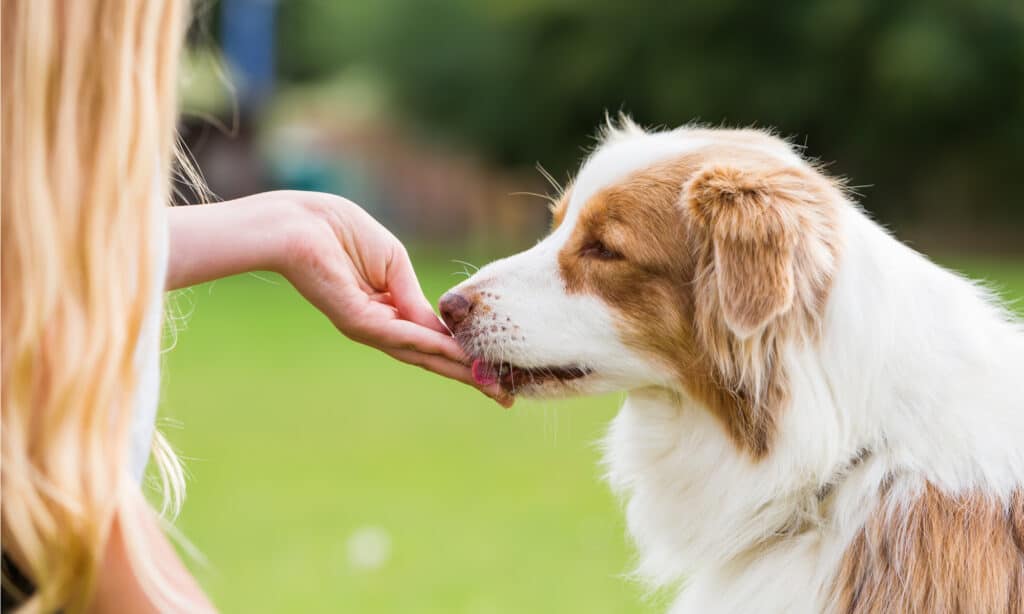
The Australian Shepherd is fond of running, jumping, and playing in open spaces, while Australian cattle dogs enjoy roaming.
©Christian Mueller/Shutterstock.com
The two dog breeds have a lot of energy and always look forward to learning something new or executing a command. They are both willing to do almost any task they are given.
The Australian Shepherd and the Australian Cattle Dog are herding breeds, so they are very fond of running, jumping, and playing in open spaces. They do, however, have herding instincts that have to be spotted early on, chasing or heel sniffing. If not properly trained, these instincts can grow, and it can be harder for the owner to train and teach the dog.
Australian Cattle Dog Trainability
The Australian Cattle Dog is more independent and bossy around the house. This is the reason why it requires a training routine. If the owner doesn’t stick to the pet’s routine, the Australian Cattle Dog won’t even think about investing its time in the training session. Rewarding techniques will also help.
According to Stanley Coren, the Australian Cattle Dog is among the 10 most intelligent dogs based on their obedience during training. A training routine will be pleasant for the owner as well. This is an important factor to take into account if you are considering adopting an Australian Cattle Dog.
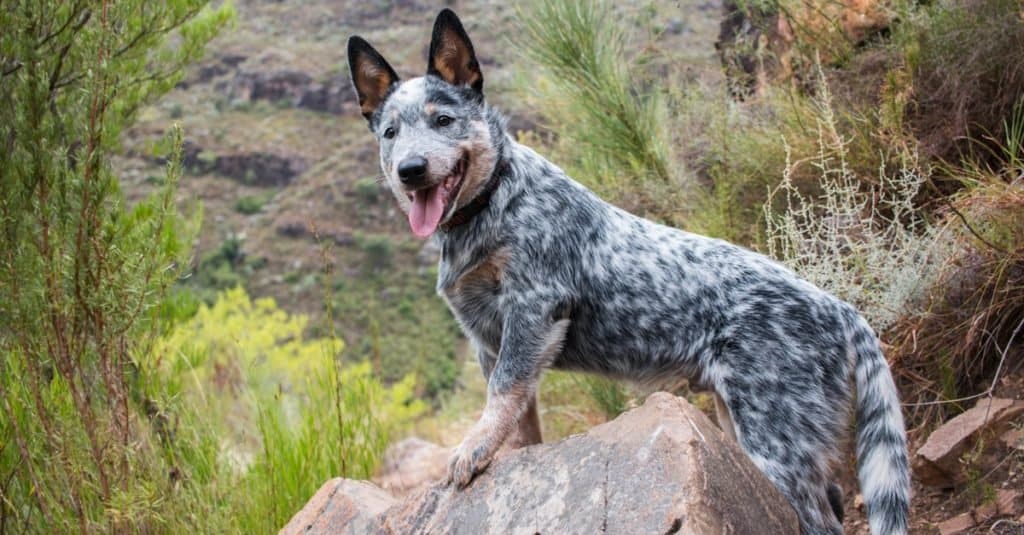
The Australian Shepherd is more reluctant when it comes to training compared to the Australian cattle dog.
©Madelein Wolfaardt/Shutterstock.com
Australian Shepherd Trainability
The Australian Shepherd is more reluctant when it comes to training. Even though it’s also independent, its desire to please the owner is bigger. If the training starts at an early age, it will incorporate it into its daily routine. This is why the Australian Shepherd requires constant training and exercising, otherwise, it will easily get bored and will become destructive.
Bonus: Do Australian Cattle Dogs Have Dingo in Them?
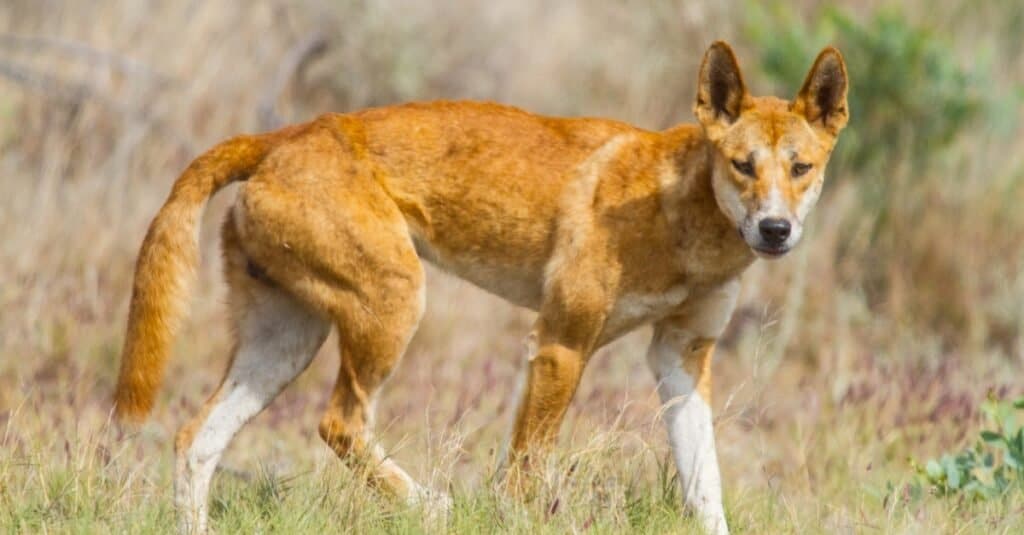
The Australian dingo is believed to have been brought to the continent by Asian seafarers 4,000 years ago.
©iStock.com/indianoceanimagery
Yes, Australian cattle dogs are related to dingoes!
For colonists in Australia who raised cattle, traditional English sheepdogs struggled with the work involved because of the hotter, drier climate of the Australian Outback. Born of this need for a cattle herder with more endurance, a cattle farmer named Thomas Simpson Hall set about solving the problem.
In 1840, he cross-bred dogs that had strains of collie with a native dingo, naming the initial new breed “Hall’s Heelers.” From an article write-up on this new breed, George Elliot of Queensland took some Hall’s heelers and continued cross-breeding them. The results were touted among cattle owners and farmers in Australia, and more cross-breeding was orchestrated by brothers Harry and Jack Bagust, who introduced dalmatian to mix, thus perfecting the coats of the Australian cattle dogs, while also producing the blue tone found in blue heelers.
Dingoes are Australia’s version of wild dogs, probably brought to Australia by Asian seafarers around 2,000 BCE. While the animal was descended from domestic dogs, it became feral in Australia but had a history that also included living in domestic settings, observed among indigenous people by European explorers as early as the 1600s.
The photo featured at the top of this post is © Maria Ulzutueva/Shutterstock.com
Ready to discover the top 10 cutest dog breeds in the entire world?
How about the fastest dogs, the largest dogs and those that are -- quite frankly -- just the kindest dogs on the planet? Each day, AZ Animals sends out lists just like this to our thousands of email subscribers. And the best part? It's FREE. Join today by entering your email below.
Thank you for reading! Have some feedback for us? Contact the AZ Animals editorial team.






